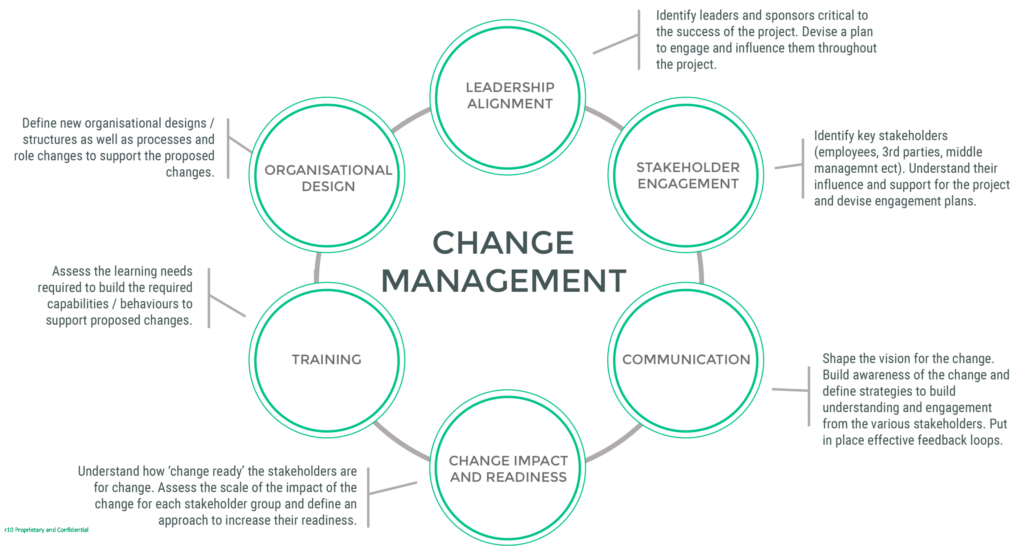
Change always happens in the fast-moving world of business today, and managing people involved is key to making changes work well. When we bring in new technology, change how things are done or even change the culture of an organization, it’s not enough just to plan and do these things. We must really listen to what the people affected by these changes want and think about them. This article examines the importance of managing stakeholders within change management and its role in ensuring successful transformations within organizations.
Understanding Stakeholder Dynamics
Stakeholder management, when it comes to change management, is about finding out who the interested parties are and talking with them. This includes workers from top to bottom, people buying products or services, those supplying goods or services, investors in the company, organizations that enforce rules and regulations, as well as the wider community. Every person involved has different hopes, worries, and power they add to the situation. It is very important for those who lead change to know and take care of these varying requirements.
Utilizing Stakeholder Engagement Software
In the area of managing people who have an interest in change management, using software to involve these stakeholders can make communication and working together much better. This kind of software offers a main place for finding, studying, and interacting with the interested parties during the process of making changes. The tools like mapping who is involved, planning how to talk with them, gathering their responses, and understanding their feelings help in handling stakeholders well and dealing with what they care about in a methodical way.
Stakeholder engagement software involving people who have an interest in the company helps to keep records of how we talk with these important individuals, see if they agree or don’t want changes, and make plans for talking to them that fit what they need and like. When you give these stakeholders a clear place where they can tell us their thoughts and worries, it makes them feel included and powerful. This means that in the end more people will be on board with the new things happening at the organization.
Securing Buy-In and Support
A main goal in managing stakeholders during change is to get their agreement and help for the changes you want to make. If important people do not support these changes, there could be opposition, slow progress or the changes might not succeed at all. So, to build trust and manage what people expect, as well as get their full commitment during times of change, it’s very important to communicate well and have good strategies for getting everyone involved.
Mitigating Risks and Addressing Obstacles
Stakeholder management acts as a way to reduce risks and deal with possible challenges to change. Organizations can make specific plans to manage their worries by finding out in advance which stakeholders might resist or block the changes, lowering opposition. This could include analyzing the interests of different stakeholders, organizing meetings to discuss issues, or providing benefits to persuade those stakeholders who are hesitant.
Sustaining Momentum
Additionally, managing stakeholders within the process of change management plays a key role in keeping progress and making sure that changes last for a long time. Change isn’t just an event that happens once; it’s an ongoing activity needing constant backing and strengthening. By engaging with stakeholders well, companies can make sure they gain from changes and deal with any problems or delays quickly.
Fostering Collaboration and Inclusivity
Stakeholder management in the process of managing change is important for creating a working environment where cooperation and including everyone is valued. When you let stakeholders take part in making decisions and ask them for their opinions and responses, companies have the opportunity to use all the knowledge and skills from people who will experience these changes. It also improves the decision-making quality and encourages stakeholders to feel more responsible and like they own part of the process.
Aligning Objectives and Interests
Additionally, managing stakeholders helps to align the goals of the organization with those of its stakeholders. When organizations comprehend what different stakeholders need and consider important, they can adjust their strategies for change so that they provide benefits not just for the company but also for all involved parties. This arrangement builds shared trust and kindness, creating a base for effective change to happen and last into the future.
Conclusion
To sum up, managing stakeholders is a key part of change management. It helps companies handle big changes with sureness and strength. When you focus on getting stakeholders involved, talking to them clearly, and working together well, you can get past opposition, lessen dangers, and make important changes that bring benefits for everyone who has a stake in it. In our quick-moving and closely linked world today, managing people who have an interest in a company is not only a good method—it’s essential for the success of an organization when things are changing.
